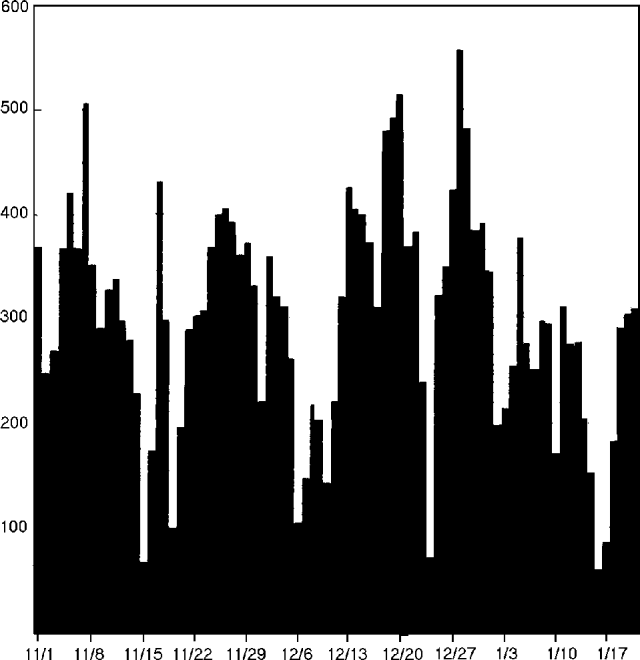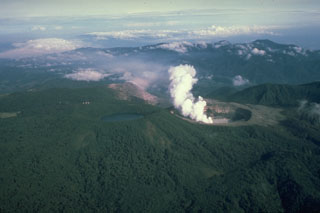Report on Poas (Costa Rica) — January 1990
Bulletin of the Global Volcanism Network, vol. 15, no. 1 (January 1990)
Managing Editor: Lindsay McClelland.
Poas (Costa Rica) Phreatic eruptions from small remaining crater lake; small liquid sulfur pools; low-frequency seismicity
Please cite this report as:
Global Volcanism Program, 1990. Report on Poas (Costa Rica) (McClelland, L., ed.). Bulletin of the Global Volcanism Network, 15:1. Smithsonian Institution. https://doi.org/10.5479/si.GVP.BGVN199001-345040
Poas
Costa Rica
10.2°N, 84.233°W; summit elev. 2697 m
All times are local (unless otherwise noted)
The level of the crater lake descended 1.5 m between November 1989 and January 1990. Its mean temperature was about 80°C and mean pH was 0.5. Degassing was continuous, and winds carried gases toward the W and SW flanks. Ejecta from phreatic eruptions reached 50 m height before falling back into the lake. Seismicity remained at low frequency (<3 Hz), with 9,434 recorded events in November (314/day), 10,164 in December (328/day), and 5,115 through 21 January (243/day) (figure 25). Geologists attributed the shallow, low-frequency seismicity to the volcano's continued degassing. Fumarolic activity continued on the remnants of the 1953-55 dome.
 |
Figure 25. Number of recorded seismic events/day at Poás, 1 November 1989-21 January 1990. Courtesy of the Observatorio Vulcanológico y Sismológico de Costa Rica. |
Geologists visited the volcano on 12 January. The roughly circular crater lake was about 75 m in diameter and appeared to be only a few meters deep. Its water was grayish-green, had a high concentration of mud, and contained small pools and ribbons of yellow or green liquid sulfur. Water temperature was 77°C. Vigorous boiling occurred at three sites associated with occasional geyser activity; one geyser event ejected lake water to 45 m height. Dense gas plumes and thin concentric bands of liquid sulfur were also associated with the boiling zones.
Geological Summary. The broad vegetated edifice of Poás, one of the most active volcanoes of Costa Rica, contains three craters along a N-S line. The frequently visited multi-hued summit crater lakes of the basaltic-to-dacitic volcano are easily accessible by vehicle from the nearby capital city of San José. A N-S-trending fissure cutting the complex stratovolcano extends to the lower N flank, where it has produced the Congo stratovolcano and several lake-filled maars. The southernmost of the two summit crater lakes, Botos, last erupted about 7,500 years ago. The more prominent geothermally heated northern lake, Laguna Caliente, is one of the world's most acidic natural lakes, with a pH of near zero. It has been the site of frequent phreatic and phreatomagmatic eruptions since an eruption was reported in 1828. Eruptions often include geyser-like ejections of crater-lake water.
Information Contacts: E. Fernández, E. Duarte, V. Barboza, J. Barquero, and J. Bravo, OVSICORI; S. Halsor, Wilkes Univ; C. Chesner, Eastern Illinois Univ.

